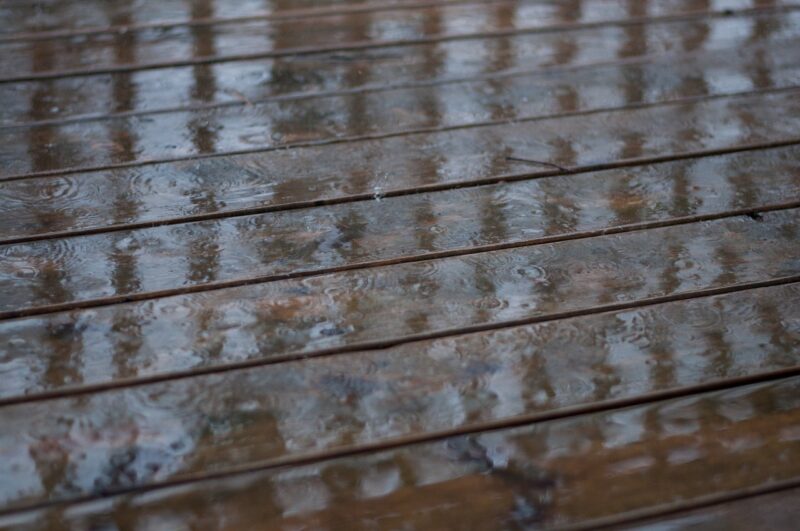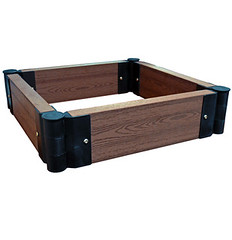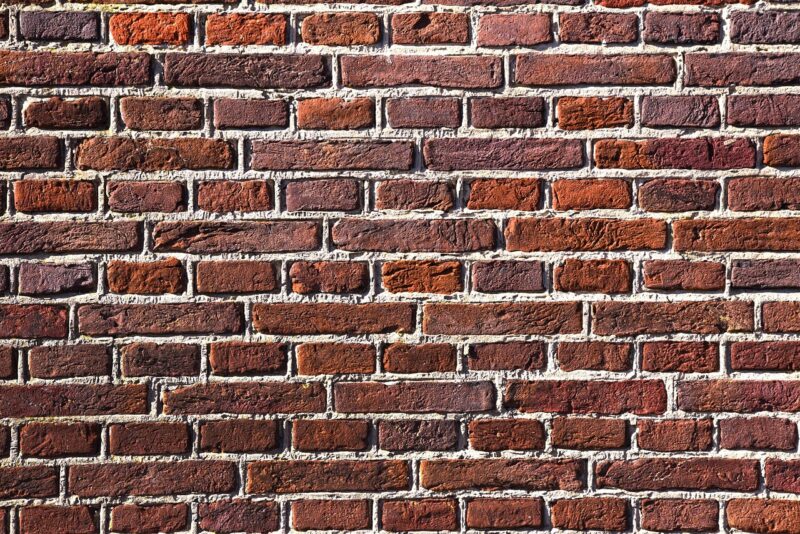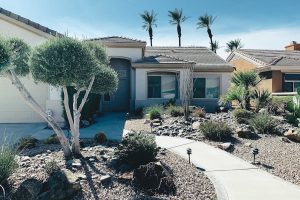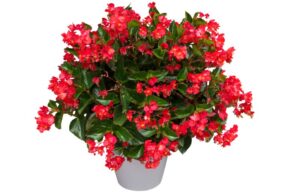On this page we’ll look at a number of creative and practical alternatives to lattice for that space beneath your deck, presenting unique materials that serve both functional and decorative purposes.
What Can I Use Instead Of Lattice Under A Deck
Many different materials can effectively enclose the area under your deck while enhancing its visual appeal. Let’s explore a variety of options in detail.
Wood
A classic choice, wood has been a common material for under-deck skirting for centuries. Not only does it provide a natural, rustic charm, but it is also highly customizable. Homeowners can select from a range of wood types—cedar, redwood, and pressure-treated lumber, to name a few.
Wooden panels can be used to create solid skirting, which can be painted or stained to match the deck. The advantages of wood include its aesthetic versatility and its relatively low cost. However, wood comes with potential drawbacks; it requires regular maintenance such as sealing and repainting to prevent decay and weather damage.
Another trendy wood solution includes the use of slatted panels, which can provide ventilation while still creating an appealing visual barrier. Incorporating decorative cut-outs or patterns into wood panels can give your under-deck area a unique touch.
Composite Deck Skirting
Composite materials are becoming increasingly popular due to their durability and low maintenance needs. Composite deck skirting typically combines wood fibers with recycled plastic, creating a robust and weather-resistant option. Unlike wood, composite skirting does not rot, splinter, or require staining, which makes it an excellent long-term investment.
This option comes in various colors and textures, allowing for easy integration with your existing deck. With composite skirting, homeowners can maintain a clean and modern look without the fuss of regular upkeep. It can also be cut to specific sizes to fit any deck configuration, giving you a customized look.
Bricks
Bricks are another timeless alternative for under-deck enclosures. They offer a solid, weatherproof solution that provides excellent aesthetics and durability. Choosing brick skirting can give your deck a more sophisticated and permanent feel.
Utilizing a brick facade can add texture and depth, contributing to the overall design while ensuring the area underneath remains accessible. Builders often employ bricks in both decorative patterns and straightforward configurations, allowing you the creative freedom to design an aesthetic that fits your style.
One of the added benefits of brick is its thermal mass, which can help control temperatures in the space underneath your deck. However, brick installation requires skilled labor, and the cost can be higher than other options. Yet, if you are looking for a robust structure with fewer maintenance demands, it can be worth the upfront investment.
Vinyl

Vinyl skirting is a more modern alternative that combines durability with ease of maintenance. Vinyl panels come pre-colored, eliminating the need for painting or staining. They are resistant to fading and insects and can be cleaned easily with a simple hose down.
Vinyl skirting is available in various styles and textures, mimicking wood or stone, allowing versatility in design. The lightweight nature of vinyl makes for relatively straightforward installation, making it a feasible option for DIY enthusiasts.
Moreover, vinyl does not warp, crack, or splinter like wood and can withstand harsh weather conditions without losing its appeal. While vinyl is a durable option, it is essential to ensure that the quality of the product is high, as cheaper variants may not withstand the test of time as effectively.
Plants

Integrating plants into the area beneath your deck creates a natural and visually appealing alternative to the more traditional lattice. Consider using a combination of potted plants, hanging baskets, and climbing vines. This living skirting not only enhances your outdoor space but also brings life to an otherwise neglected area.
Vines such as clematis or various climbing roses can be trained to grow along the underside of your deck, creating a natural curtain of greenery. The use of plants allows for creativity and personal expression; choose herbs, flowers, or foliage that complements your deck’s decor and contributes to your landscape design.
When incorporating plants, it’s wise to consider the amount of sunlight that penetrates beneath the deck. Some plants thrive in shade while others may require direct sun, so it’s important to select species accordingly. The beauty of plants lies in their natural ability to soften hard edges while promoting biodiversity.
Gravel or Stones
Using gravel or decorative stones allows for a different aesthetic entirely. Not only does this option provide drainage—a major concern in many regions—but it also requires little maintenance beyond occasional raking or replacing stones.
Different sizes and colors of gravel can create a unique look, while also ensuring that your under-deck space remains functional. Some homeowners even go as far as building a rock garden under their deck, integrating hardy plants that thrive in rocky environments. This approach balances practicality with style and adds an earthy touch to your outdoor area.
Small boulders can also be interspersed among the gravel for visual interest while creating a natural appearance. The sound of gravel crunching underfoot can offer an ideal pathway, connecting the various areas of your outdoor space, enhancing both accessibility and ambiance.
What to Consider When Selecting an Alternative Material for Under Your Deck
Choosing the best alternative material for under your deck involves weighing multiple factors. Here are key considerations to keep in mind:
Climate and Environment: Depending on your location, certain materials may fare better than others. For example, wood might struggle in a humid environment prone to rot, while synthetic materials like vinyl, composite, or stone may prove more resilient.
Aesthetic Appeal: The appearance of the enclosure should match your home’s style and the overall landscape. Consider the colors, textures, and styles of your existing deck and outdoor areas to maintain a cohesive look.
Maintenance Requirements: Reflect on how much time you are willing to invest in upkeep. Low-maintenance materials like vinyl or composite are preferable for busy homeowners or those seeking an investment of time rather than routine maintenance.
Budget: Costs can vary widely based on materials, labor, and design complexity. If you’re on a tight budget, explore cost-effective options like gravel or simple wood skirting, while reserving premium materials for other areas of your home.
Accessibility: If you plan to store items underneath your deck, accessibility becomes vital. Ensure your chosen material allows for easy access to the under-deck space and does not hinder ventilation or drainage.
Installation Difficulty: Some materials may require professional installation, while others can be easily tackled as a DIY project. Assess your skill level and the tools available to you before deciding on a material.
Environmental Impact: If sustainability is a priority for you, consider using recycled materials or those sourced from sustainable practices. Composite products or reclaimed wood are eco-friendly choices that help reduce your carbon footprint.
Conclusion
In light of the above considerations and options, selecting a lattice alternative under your deck can enhance both functionality and style. From the rustic charm of wood to the drought-resistant beauty of gravel or stone, the alternatives available cater to a spectrum of tastes and requirements.



